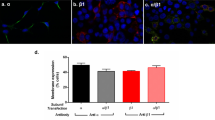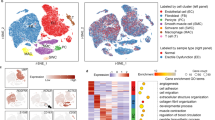Abstract
The corporal myocyte is a critical determinant of erectile capacity whose functional integrity, in the vast majority of impotent patients, is sufficient to guarantee its relevance as a therapeutic target. As with numerous other smooth muscle cell types, ion channels are important modulators of corporal smooth muscle tone/contractility. As such, the transmembrane flow of ions (ie Ca2+, K+ and Cl−) plays an important role in modulating membrane potential and contractile status in individual human corporal smooth muscle cells, while intercellular ion flow ensures the functionality of myocyte cellular networks. The integral membrane proteins that selectively regulate many aspects of these critical transmembrane (eg K+ and Ca2+ channels) and intercellular (eg gap junctions) ionic movements have been identified. To date, the large conductance calcium-sensitive K+ channel (ie KCa), the metabolically regulated K+ channel (ie KATP), and the L-type voltage-dependent Ca2+ channel appear to be the most physiologically relevant nonjunctional ion channels. With respect to intercellular ionic/solute/second messenger movement, connexin43-derived gap junction channels are widely recognized as an obligatory component to normal integrative erectile biology. The presence of an intercellular pathway ensures that individual cellular alterations are carefully orchestrated in the rapid and syncytial fashion required for normal erectile function. This report reviews the known details concerning junctional and nonjunctional ion channels in human corporal tissue, and illustrates how one particular application of this knowledge, that is, preclinical studies utilizing low efficacy gene therapy (ie low transfection efficiency) with the KCa channel has further confirmed the physiological relevance and therapeutic potential of gap junctions and ion channels to erectile physiology/dysfunction.
This is a preview of subscription content, access via your institution
Access options
Subscribe to this journal
Receive 8 print issues and online access
$259.00 per year
only $32.38 per issue
Buy this article
- Purchase on Springer Link
- Instant access to full article PDF
Prices may be subject to local taxes which are calculated during checkout
Similar content being viewed by others
Author information
Authors and Affiliations
Corresponding author
Rights and permissions
About this article
Cite this article
Christ, G. Gap junctions and ion channels: relevance to erectile dysfunction. Int J Impot Res 12 (Suppl 4), S15–S25 (2000). https://doi.org/10.1038/sj.ijir.3900573
Published:
Issue Date:
DOI: https://doi.org/10.1038/sj.ijir.3900573
Keywords
This article is cited by
-
Lipid metabolism and neuromuscular junction as common pathways underlying the genetic basis of erectile dysfunction and obstructive sleep apnea
International Journal of Impotence Research (2023)
-
Down-regulation of KCa2.3 channels causes erectile dysfunction in mice
Scientific Reports (2017)
-
Gene therapy for the treatment of erectile dysfunction
Nature Clinical Practice Urology (2008)
-
Molecular mechanisms of detrusor and corporal myocyte contraction: identifying targets for pharmacotherapy of bladder and erectile dysfunction
British Journal of Pharmacology (2006)
-
In vitro models: research in physiology and pharmacology of the lower urinary tract
British Journal of Pharmacology (2006)



